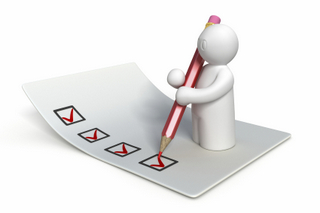DEA Numbers: What Do They Mean?
Posted on 07.05.2024
CareerStep2 min read

The Comprehensive Drug Abuse Prevention and Control Act of 1970 was created to combat and control drug abuse. This act also classified drugs with potential for abuse as controlled substances and ranked them into five categories, or schedules. They go from Schedule 1 to 5, with those in Schedule 1 classified as having the most potential for abuse and the potential for abuse decreasing with each Schedule. The agency made primarily responsible for the enforcement and prevention related to the abuse of these substances was the Drug Enforcement Administration (DEA).
What are DEA numbers and how do they work?
It’s important for the DEA to track controlled substances. One way the DEA does this is to assign a DEA number to every healthcare provider that allows them to write controlled prescriptions. The DEA number is also used to identify the prescriber. Every DEA number is made up of two letters, six numbers, and one check digit. The first letter is a code to identify the type of prescriber (i.e., a hospital, a practitioner, a manufacturer, etc.). The second letter is the first letter of the prescriber’s last name. The seven numbers follow, and the seventh is the check digit. Let’s walk though the steps of how to verify the DEA number.
A Dr. Patterson sends in a prescription with DEA number CP2756344.
Step 1: Add digits 1, 3 and 5 = 10
Step 2: Add digits 2, 4 and 6 = 17 x 2 = 34
Step 3: Add the results for step 1 and 2 = 44. The last digit of this sum should be the same as the last digit of the DEA number.
This DEA number is valid. Here’s another example:
A Dr. Smith sends in a prescription with DEA number CC8422965.
Step 1: Add digits 1, 3 and 5 = 19
Step 2: Add digits 2, 4 and 6 = 12 x 2 = 24
Step 3: Add the results for step 1 and 2 = 43. The last digit of this sum should be the same as the last digit of the DEA number.
Because the last digit is 3, and because the second letter is a “C” instead of an “S,” this would not be a valid DEA number.
With advancing technology, a computer may verify the DEA number for you when you’re working in the pharmacy, but understanding how the numbers work is still important in both retail and institutional pharmacy.
Read more: Retail Pharmacy vs. Institutional Pharmacy
How to obtain a DEA number
Regardless of your role, if you prescribe medication, you must register for your DEA number. There are different forms for different medical positions, so be sure to fill out the correct one. It’s also important to note that DEA numbers expire, so you must keep up to date with it.
How do DEA numbers relate to pharm techs?
Pharmacy technicians need to have a complete understanding of DEA numbers in order to adequately do their job. Latoya Hill, Pharmacy Technician Instructor at CareerStep, explains, “Verifying DEA numbers is important in pharmacy to ensure legitimacy and compliance but also to prevent diversion and fraud.”
You can even count on some DEA number related questions when you sit for the Pharmacy Technician Certification Board (PTCB) exam, so it’s important to familiarize yourself with the process.
Read more: How Long Does It Take to Become a Pharmacy Technician?
Dive deeper into DEA numbers with a pharm tech program
If you want to learn more about DEA numbers and how pharm techs use them, consider enrolling in a trusted pharmacy technician program. At a school like CareerStep, you’ll get all the info you need about DEA numbers as well as how to perform the job duties of a pharm tech. Get on your way to a rewarding career today!
